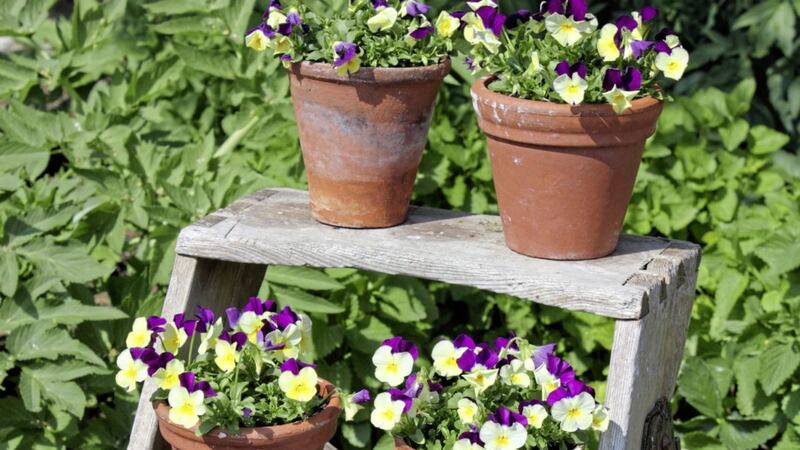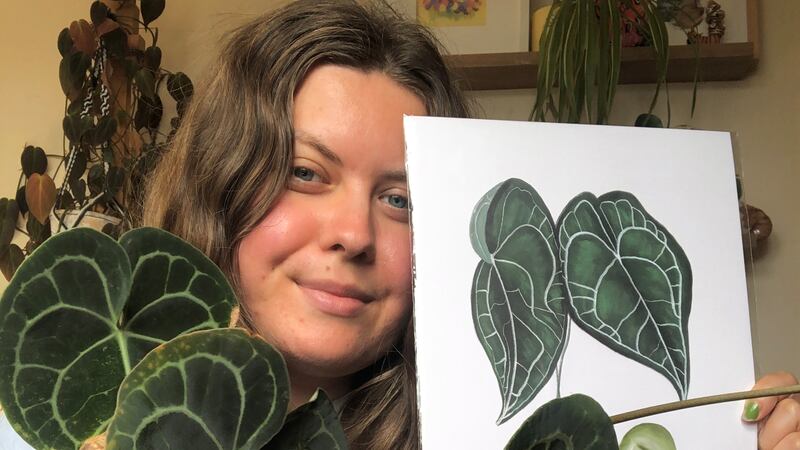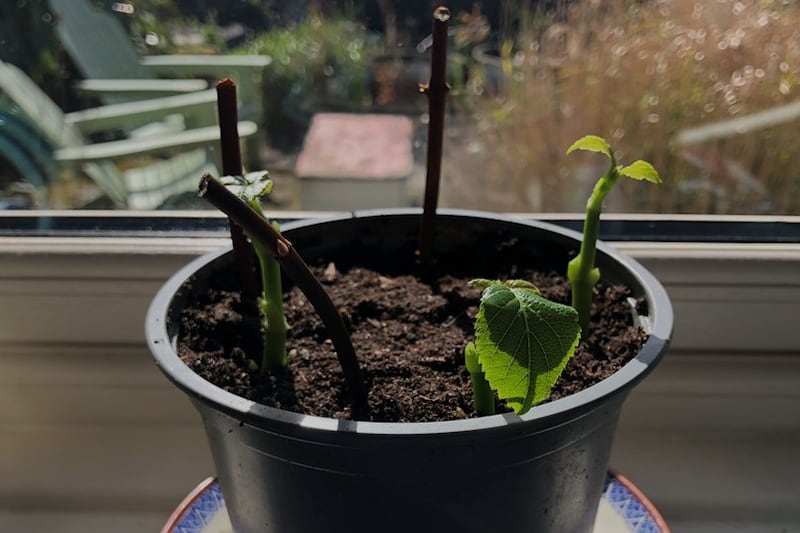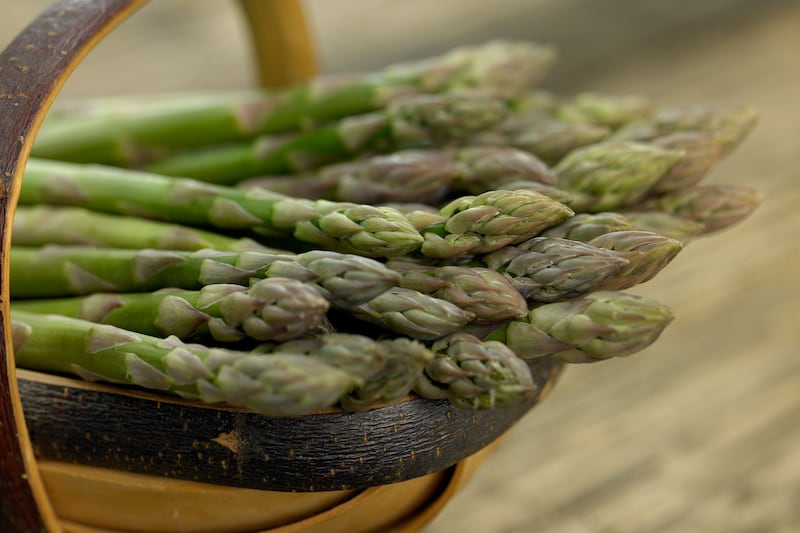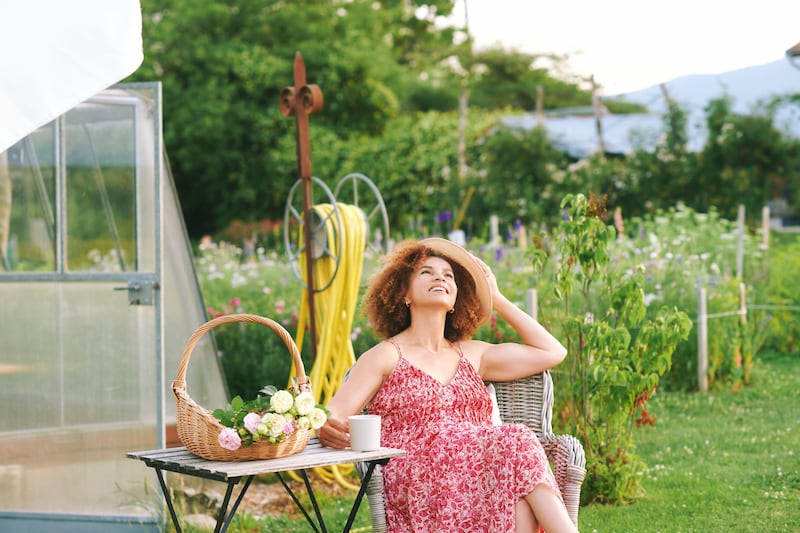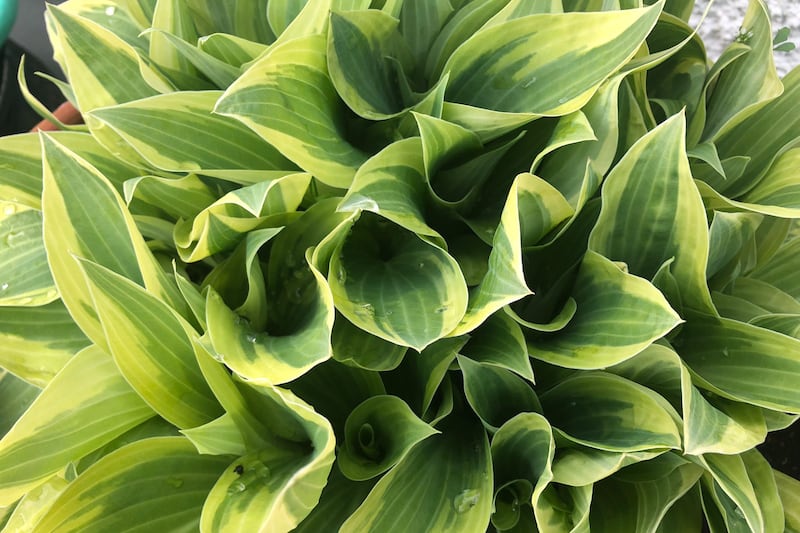DO YOU find that you just don’t have enough floor area when you venture into your small garden?
It may leave you tripping over pots, squeezing into cramped seating areas and longing to be able to grow much more in your outside space.
Yet, if you think vertically, the smallest space can offer an abundance of produce in pots if you make the most of your walls, windowsills and fences, says Mark Ridsdill Smith, creator of the popular website Vertical Veg (verticalveg.org.uk) and author of a new book, The Vertical Veg Guide To Container Gardening.
Ridsdill Smith, who runs workshops for new growers, found his passion for edible plants when he lived in London and only had room to grow plants on his balcony windowsills. He then moved to Newcastle where he grew veg in the concrete backyards of two rented homes before moving to his present house, where he has a container garden in his concrete front yard.
“Using containers is a brilliant way of growing food in a small space, whether it be a balcony or even just a windowsill,” he says.
He offers the following tips on ways to maximise growing potential in your vertical space.
1. Think about platforms and prettiness: “If you’ve an old ladder or plant pockets or shelves to attach to a fence or wall, you can increase the amount of vertical space,” he recommends. Think about using the rungs as shelves to display a number of pots with different edibles.
“If you just have space for one plant growing up a wall, make space for a hanging basket coming down filled with trailing edible flowers like nasturtiums and violas. I love growing Orach ‘Scarlet Emperor’, a bright magenta-coloured leaf which tastes like spinach and is really easy to grow, while chard has different coloured stems.”
2. Make use of climbers: Veg like climbing French beans and climbing runner beans are ideal for growing in a pot up a wigwam made from three canes tied together at the top. Alternatively use coppiced sticks for a more natural look. You can get a lot of beans from one pot,” he says. “They used to be grown as ornamentals because they are really pretty. But they don’t tolerate frost, so start them outdoors at the end of May or indoors a little earlier.”
Attach string to your wall when growing vine tomatoes, squash and other tall plants which grow on one stem, which you can tie in as they grow. Blackberries would also grow in this way, he adds.
“Cherry tomatoes such as Gardener’s Delight are good, but they will need sowing inside in spring, or you could buy plants for planting outside in June.”
For this to work effectively, you’ll need an attachment point above the plant, whether it be screwing small eyes into the wall above, or finding an old nail to run vertical lines down to your plants.
You can even grow tomatoes in a pot on the windowsill if you tie the string to the top of the windowsill and then tie the other end loosely round the base of the plant, winding it around as it grows.
3. Make a vertical herb garden: “You can repot supermarket herbs into larger pots to encourage growth. Split plants like parsley and basil, but you won’t need to split mint. Alternatively go to a herb nursery. Herbs really are one of the easiest things to start with,” Ridsdill Smith says. You can put them in a row on shelving on your wall, grow them in window boxes or on a balcony and pick the leaves when you need them. “Most of them don’t need very much sun, either.”
4. Start off with micro-greens: “These are great for beginners. They grow really quickly, so you get a crop in about two weeks. Pea shoots are very tasty. Buy dried peas from the supermarket and sow them in a seed tray thickly and you’ll have pea shoots in two weeks. They are better grown outside and are best grown at this time of year,” he says.
5. Trail veg from hanging baskets
A bracket is all you need from which to suspend a hanging basket, which will provide you with trailing tomatoes and salad leaves, he recommends.
6. Invest in fruits: “They require a longer investment of time, but you can easily grow fruit in a pot, which will make use of your vertical space. Fruits like blackberries – there’s a thornless type called Loch Tay which fruits in July – will grow up a wigwam.”
7. Grow salad leaves in wall pouches: “Salad leaves are among the easiest things to grow. There are so many different varieties – mustard, rocket, sorrel and many others. You can have this really mixed diversity of leaves which looks really pretty. Include some nasturtiums as the flowers look lovely and can be eaten,” he advises.
8. Use water reservoirs: If you have a sunny garden and want to save time on thirsty plants such as tomatoes and beans, grow them in containers with a reservoir, he advises. They are brilliant for sun-loving plants like chillies, aubergines and peppers. You may struggle with some salad crops in mid-summer which could run to seed (bolt) in the heat.
9. And if you have a shady small garden… “Focus on all the leafy herbs and vegetables, kale, chard and spinach, plus woodland fruits such as raspberries, blackberries, blueberries and rhubarb,” he says. “They will be OK in three to four hours’ sun, but if not, concentrate on herbs and microgreens.”
The Vertical Veg Guide To Container Gardening by Mark Ridsdill Smith is published by Chelsea Green on March 24, priced £25.
